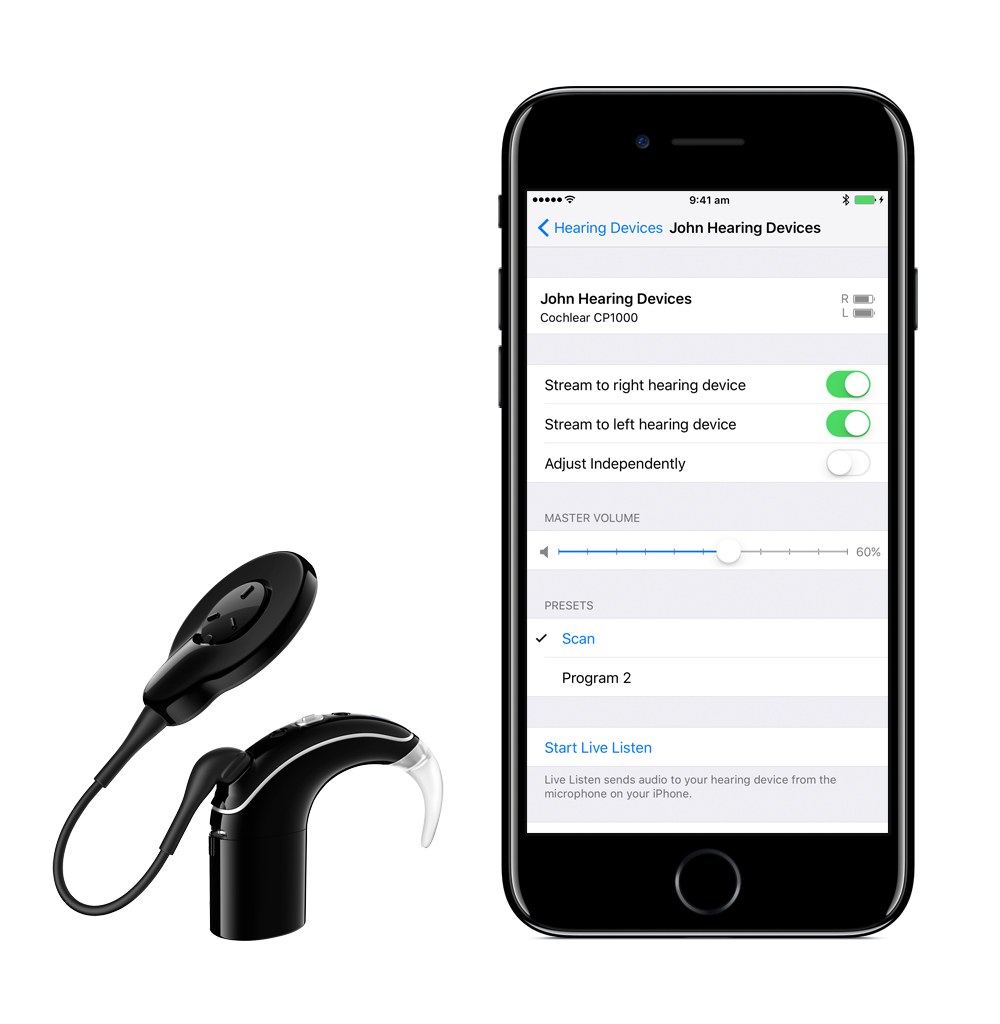Hearing is the second most important sense, so its loss has a huge impact on a person's life. Apple in partnership with Cochlear has an unrivaled solution for people who have lost their natural hearing.
Hearing problems are currently solved in two ways in terms of assistive devices – with an external hearing aid or a cochlear implant, a device operated under the skin with an electrode connected to the cochlea, a part of the inner ear that ensures the conversion of air vibrations into electrical signals that are processed by the brain.
The second solution is understandably much more expensive and technologically demanding, and is used by people with almost complete or complete hearing loss who are no longer helped by a classic hearing aid. Worldwide, 360 million people have hearing problems, and about 10 percent of them would benefit from surgery. So far, only one million people with hearing loss have undergone it, but as the sophistication of the device and awareness about it increase, this number can be expected to gradually increase.

A new version of the cochlear implant from the company that started producing them among the first will probably make a significant contribution to this. Cochlear's Nucleus 7 approaches this type of device in a new way. Until now, implants were controlled by special controllers. It was also possible by phone, but very unreliable.
However, the Nucleus 7 is able to connect to the iPhone using the new Bluetooth protocol without the need for additional devices, and the sound from the iPhone can be streamed directly to the implant. So the user does not have to put the phone to the ear and does not need headphones to listen to music. The Live Listen feature can even use the iPhone's microphone as a sound source for the implant.
Apple has long been known as a company that cares about users with disabilities - for example, iOS devices have a special section for hearing aids in the settings with the possibility of pairing devices and a special mode to improve the sound of some hearing aids. The protocols required to pair with iOS devices are freely available to hearing aid manufacturers, and their use gives the device the "Made for iPhone" label.
For pairing iOS devices with hearing aids, Apple already started using its own Bluetooth protocol, Bluetooth LEA, i.e. Low Energy Audio, in 2014. This protocol builds on the more widespread Bluetooth LE, which is primarily used for data transmission, while LEA specifically focuses on high-quality audio transmission while using minimal energy.
In collaboration with a third company, ReSound, Apple and Cochlear then developed another system that combines a smartphone, a cochlear implant and a classic hearing aid. The user has an implant in only one ear and a hearing aid in the other and is able to regulate them independently from the iPhone. In a busy restaurant, for example, he can reduce the sensitivity of the device facing the room and pay attention only to the conversation he wants to participate in.
As the Nucleus 7 in conjunction with the iPhone allows users with hearing loss to control their sound environment far better than healthy people are able to do, Apple and Cochlear are actually showing some of the first examples of the future possible cyborgization of people who are healthy but want the capabilities of their bodies improve.
I don't really understand why I should envy something like that.
because the future is nau... probably... I don't take it either
Direct audio streaming from iOS to hearing aids has been offered by Oticon for at least a year with its Opn models.
"allows users with hearing loss to control their sound environment far better than healthy people are able to..." That's a huge exaggeration.